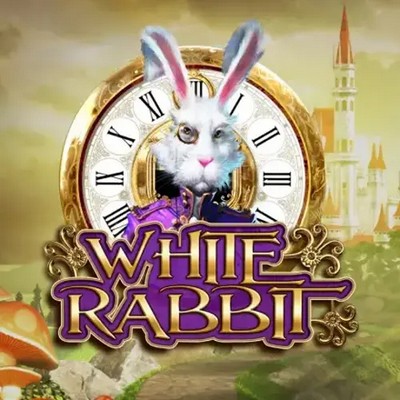Jokabet United Kingdom
Jokabet Casino is a next-generation high-tech platform developed in 2023. We have partnered with the best software providers in the industry to provide customers with the best casino games in the market. In addition, we base our operations on several exciting aspects, thereby attracting a significant number of subscribers. Some of these aspects include fast payouts, the fact that you are a licensed online casino, an extensive gaming library with over 6,000 game titles, a number of bonuses, a multilingual platform and 24/7 customer support.
| Official Site | jokabet.wcgalp.org |
| Year of creation | 2023 |
| Brand | Jokabet, Joka bet |
| Country | Englash, Scotland, North Ireland, Wales |
| Min. Deposit | 20 EUR/ 20 GBP |
| Tech support | Live Chat, Email |
Advantages of our casino
- Wide choice of payment methods
- Huge collection of slots
- Licensed and regulated by two gaming authorities
- Live dealer games available
- Cryptocurrency deposits accepted
- Games are backed by leading software providers
- Great welcome bonus offer
- Bookmaker section available
Register: Get welcome bonuses and start winning today
Jokabet offers a simple approach to opening a new account on its website. The steps below summarise the registration process at Jokabet:
Registering on Jokabet
- open your browser on your desktop or mobile device;
- enter our website address;
- select the “Register” option on the homepage;
- select your preferred email address and password;
- accept the terms and conditions of playing on Jokabet;
- click “register” to complete the registration process.
Log in to Jokabet at any time by following the steps below:
- visit the Jokabet gaming website;
- click on the “Login” button;
- enter your email address and password;
- click “Login” to access your Jokabet gaming account.
Welcome Bonus
There are separate rewards for registration for the casino and the betting section. The casino bonus applies to the first three deposits, and their distribution is as follows:
Jokabet Casino Welcome Bonus
- 100% deposit bonus up to €150 + 250 free spins.
- 55% deposit bonus up to € 150.
- 100% deposit bonus up to €100.
Jokabet awards free spins on your first deposit in batches of 50 within five days of activation. The same bonuses on the first three deposits require 35x wagering. The maximum possible winnings from the first deposit is €50, with a 35x wagering requirement.
A minimum deposit of €15 is sufficient to receive any of these bonuses. The casino welcome package is valid for seven days. The sports sign-up bonus consists of three levels tied to the first three deposits, including:
- 100% bonus up to €100.
- 75% bonus up to € 150.
- 50% bonus up to €200.
The deposit plus the bonus amount must be wagered 5 times. These rewards are only available after confirmation email.
Other promotions
Our casino offers promotions for the casino and sports sections, including cashback and multipliers. There are occasional lotteries and tournaments with big prizes.
Promotions at Jokabet Casino include:
- Cashback up to 25%.
- 20 free spins with the Carry on Crypto promotion
Make a deposit of €20 or more to qualify for the Carry on Crypto promotion. Bookmaker Jokabet offers a 1.5x multiplier as part of the promotion with multiple upsells. Place bets on more than four events on a multi-betting coupon with odds of 1.3 or more to qualify.
Explore the world of gaming: Top providers and exciting slots await you
CasinoClients are offered over 4,500 slots titles from over 100 reputable software providers. These include Pragmatic Play, Playtech, Netent, Gamzix, Quickspin, Amatic, Playson, Push Gaming and Evoplay. The wide selection of game providers allows Jokabet Casino customers to access game titles with sharp graphics, memorable storylines, unique themes, exciting soundtracks and other aspects such as varying game speeds and volatility.
There are over 6,000 titles from various well-known studios. One of the advantages of such an extensive portfolio is that members can quickly access their preferred games. The likelihood of not having a game that matches your preferences is close to zero.
What is even more impressive is that this online casino categorises most types of games, allowing players to identify them. Some of the available categories include slots, gaming tables, jackpots and live casino games. Additional sections include best, new, original, favourites and popular games. All Jokabet casino games are filled with exciting aspects such as unique themes, soundtracks and graphics in slots, which is the most extensive type of games.
Our Jokabet online casino serves customers with more than 4,500 slot titles. The ability to play these slots for free gets even better, allowing players to test the game mechanics of a particular game before choosing their preferred one. Popular slots available include Wolf Gold, The Dog House, Alien Fruits, Sugar Rush, Burning Chilli X, Gates of Olympus, Brave Viking, Bonanza Billion, 3 Genie Wishes and Book of Cats.
Convenience and security: A variety of payment methods and 24/7 technical support
At our online casino, customers find popular and convenient payment methods to make transactions hassle-free. Credit / debit cards, bank transfers and e-wallets are some of them, with Visa / MasterCard, Mifinity, Astropay and Skrill being the most common ones. Note that all of the methods mentioned offer instant deposit.
Like many modern sites and because of its global appeal, players at our gambling establishment, can make transactions in multiple currencies. These include EUR, CAD, AUD, AUD, CZK, NZD, HRK, RON, ZAR, BGN and cryptocurrencies such as BTC, ETH and USDT.
Customer service at Jokabet Casino is exceptional, thanks to the fact that we have support agents available 24/7. Users who encounter problems such as receiving error notifications when making a withdrawal or deposit, being blocked from accessing a certain type of games, having their account locked or having trouble completing the registration process can contact the support executives for assistance at any time.








